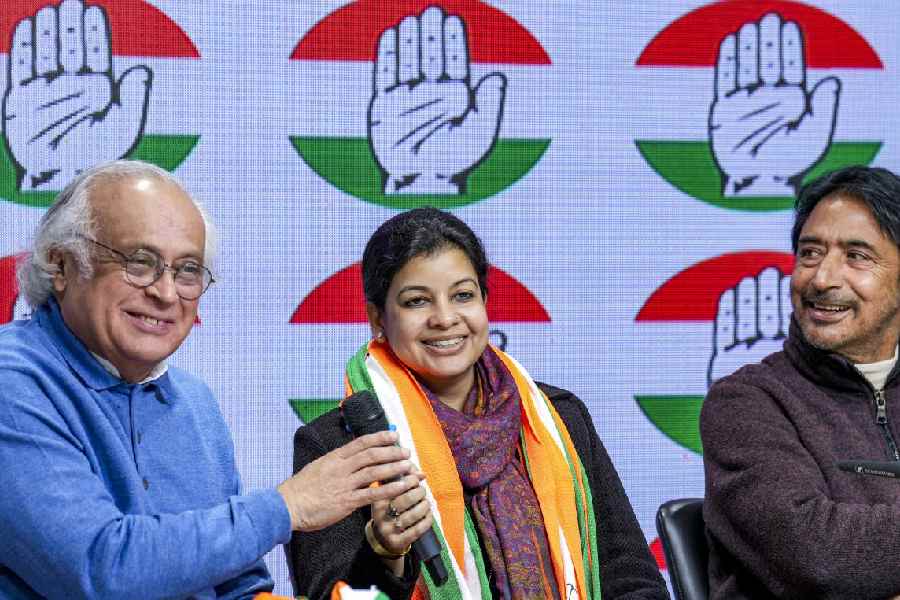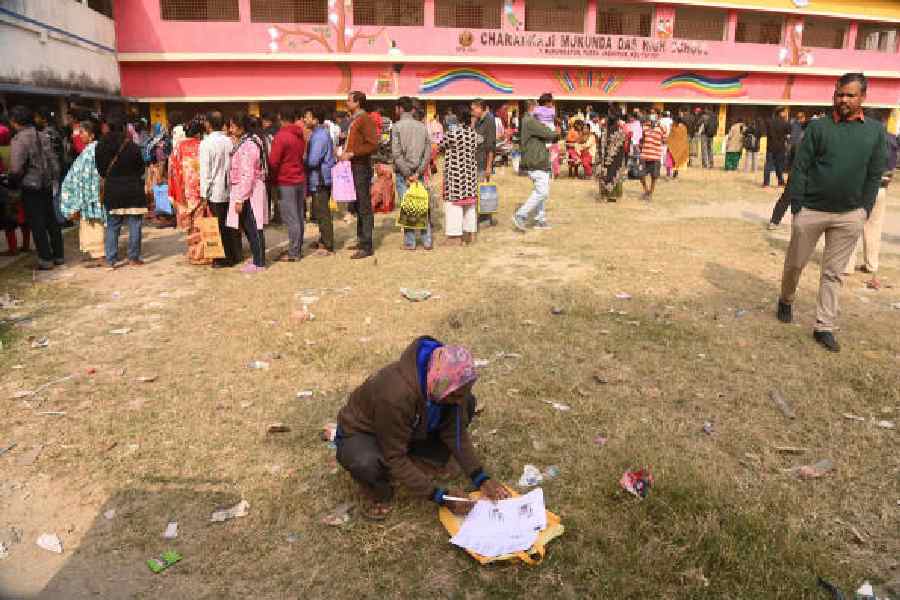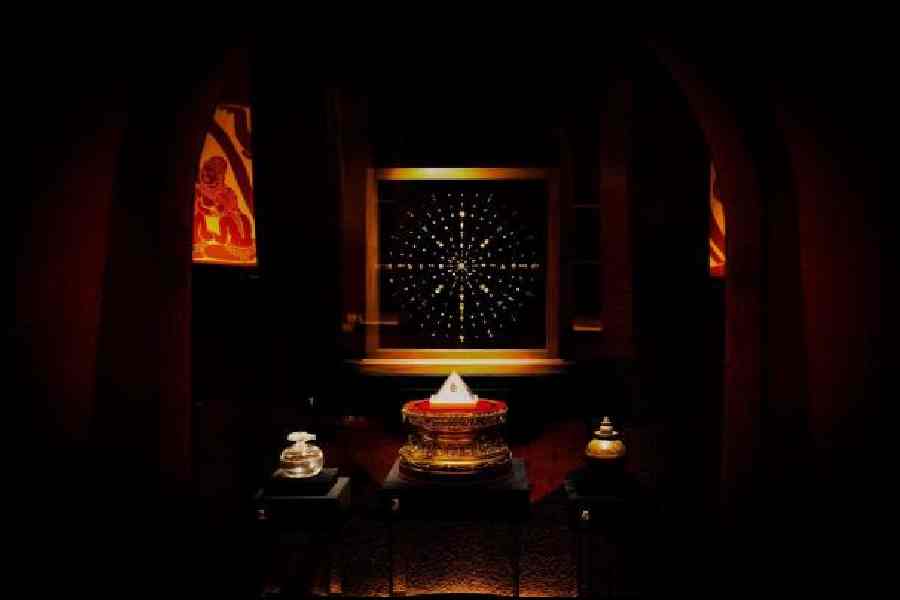|
|
Mahatma Gandhi once remarked that the atom bomb was “the greatest sin known to science”. After India exploded a nuclear device on May 11, 1998, and the nation swirled around itself in hysteria, it took a contemporary Gandhian to remember what the master had said. Thus, the first dissenting article in the national press was written by the veteran architect, Laurie Baker, who recalled the three tests an invention of science had to pass in a country such as ours. These tests were: Is it non-violent? Is it eco-friendly? Is it poverty-reducing? The answers, in the case at hand, were No, No, and No.
Now, five years after the Pokhran blasts, let us recall the Gandhian who, in his lifetime, mounted the most sustained campaign against nuclear weapons. He was C. Rajagopalachari. In 1945, after the bombs were dropped on Hiroshima and Nagasaki, he quipped, “All this while we knew only of the chemist’s bombs. Now we know of bombs made by physicists.” A decade later, his tone was deadly serious. His biographer, Rajmohan Gandhi, quotes from a letter written by Rajaji to the The New York Times at the end of 1954, in which he urged each party in the Cold War not to “wait for the other”, but to unilaterally “throw all the atomic bombs in the deep Antarctic and begin a new world free from fear”.
In 1959, in a piece directed against nuclear tests, Rajaji wrote in disgust of “politicians and technicians who do not believe in co-existence and mutual trust, but are convinced, and have been doing their best to educate the people to believe, that the best defence of national existence is to make it clear that they have terrible weapons of retaliation. And this is naturally associated with a policy of armament manufacture to achieve that retaliatory stren- gth and purpose”. He was speaking, of course, of America and Russia, then, but he could as well be speaking of India and Pakistan, now.
Rajaji thought that the making of atom bombs was the product of hubris, with modern man believing he “had the rights and privileges of the sun or even of the Lord God himself”. It was, he remarked, “an unfortunate day when science lifted the curtain of fundamental matter and trespassed into the greenroom of creation”. Rajaji made a distinction between a “free science” which honestly documented the radiation effects of nuclear tests, and a “hired science” which tried to doctor its results. Atomic tests, he said, were “a wholly illegitimate attack on the health of the present and future generations of the uninvolved millions, who have not yet written off their rights in favour of the nuclear pugilists”.
Rajaji’s campaign against nuclear arms culminated in a journey he made to the United Kingdom and the United States of America in 1962, at the head of a three-member delegation travelling under the auspices of the Gandhi Peace Foundation. (The other members were R.R. Diwakar and B. Shiva Rao.) Rajaji was already 83, and this, believe it or not, was his first trip to the West. In America he met, among others, Henry Kissinger, Robert Oppenheimer (the man who had led the Los Alamos team that made the atom bomb, but had later thrown his hat into the peace camp), and the representatives to the United Nations of the Soviet Union and the US. Rajaji also spoke at several universities and at the prestigious Council for Foreign Relations in New York. All through, he pursued his case against the Bomb with (to quote his biographer) “the energy of a 40-year-old”.
The highlight of the trip was a meeting with John F. Kennedy, who gave them 25 minutes, but was so charmed by Rajaji that in the end they chatted for over an hour. Later, Kennedy told an aide that “seldom have I heard a case presented with such precision, clarity and elegance of language”. The diplomat, B.K. Nehru, who was present, recalled how “the secretaries who came in with slips of paper reminding the president of his appointments were shooed away”. Kennedy, it appears, was “fascinated” by Rajaji.
But Rajaji wasn’t entirely sure that the president was convinced. A week later, the journalist, Vincent Shean, met him in New York, and sought to gift him a stamp of Mahatma Gandhi just issued by the US postal department. “You keep it,” said Rajaji to Shean, “and use it in a letter to Kennedy asking for the renunciation of the atomic bomb.”
After the delegation’s return to India, B. Shiva Rao wrote to Jawaharlal Nehru of the impact its leader had made. When Rajaji spoke at the council of foreign relations, the leader of the American delegation to the UN disarmament conference in Geneva told Shiva Rao: “Why don’t you send this man to represent India at Geneva?” Altogether, Rajaji had made “a deep impression on all the persons he saw in the USA and England”. He would, Shiva Rao told the prime minister, “make an admirable representative for India…in Geneva”. He was “extremely able and dignified in his presentation of the case for nuclear disarmament”. Were he indeed to be sent as the government’s representative to the talks, it would aid India in playing “a constructive part in bringing about phased disarmament”.
The suggestion was well meant, and well merited. But by this time, Nehru and Rajaji were in rival political parties. True, they agreed on the Bomb, but the prime minister found the older man’s attacks on his economic and social policies hard to forgive. “Rajaji is undoubtedly a person of high ability,” replied Nehru to Shiva Rao, “and we all have respect and affection for him. But I doubt very much if he will at all suit or fit in with the disarmament conference at Geneva which consists of senior officials. Also, unfortunately, he disagrees with almost everything in the domestic or international sphere for which some of us stand.” Partisan considerations would not allow India to send its best man to Geneva.
Strikingly, Rajaji was against atomic power as well as atomic weapons. When, in 1954, The Times of India insisted that nuclear energy was vital to a “power-starved” India, Rajaji drew their attention to the “terrible character of the risks necessarily attached” to this industry. Its process of production “totally disregards the rights of those that do not in any way benefit from the enterprises”. Moreover, “the general public is almost entirely ignorant of all that the new power source involves. It is not like coal or oil but comparable to a hypothetical case of using the thunderbolt to cook our breakfast”. This was characteristically acute, as well as prescient, for it took another two or three decades before science, and society, made a proper acquaintance with the risks and costs of nuclear power.
The anti-nuclear movement in India has witnessed the not always comfortable co-existence of Gandhians and Communists. However, after 1998, it has been more or less captured by the left who, on the one hand, do not question the dangers of nuclear energy and, on the other, seem to think that nuclear weapons are somehow safe if placed in the hands of red regimes. Thus the Communist Party of India (Marxist), which has been so forthright in its criticisms of India’s nuclear programme, was silent for years about China’s possession of atomic weapons.
Rajaji’s work has a more general relevance to questions of scientific ethics and nationalist military rivalry, but it also has a more specific relevance, to the ethics of the anti-nuclear movement itself. He once expressed his wish to “rescue the peace movement from the clutches of the Communist party”. It is a task that remains unfinished.












